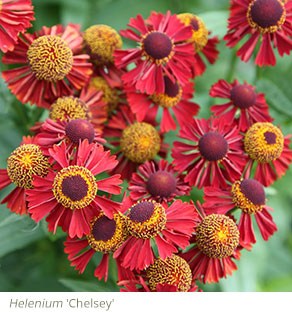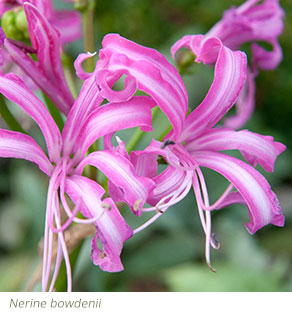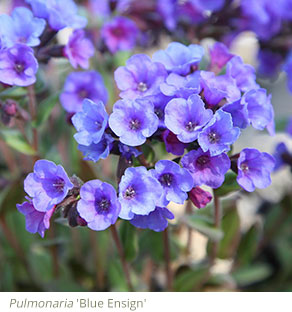That phrase the ‘bee’s knees’, meaning ‘the best of the best’, isn’t far from the truth because many bees carry pollen in sacs on their hind legs. Not all bees have them though. Some trap pollen on the hairs on their bodies, others on their undersides. However all bees have to gather pollen and nectar to survive. Nectar is the energy drink, needed for flight, and pollen provides the protein-rich boost needed to raise a brood. As bees travel from flower to flower, pollen is transferred almost accidentally, and seeds and fruit are produced by this outcrossing process. Without bees, the natural world would soon grind to a halt because very few plants are self-fertile. They need some pollen from other sources.
 In parts of south-west China, where intensive agriculture has been the norm, there are no wild bees left to pollinate apple and pear crops. Excessive pesticide use and lack of natural habitat has eradicated wild bees, so farmers are forced to carry pots of pollen and paintbrushes and individually pollinate every flower. Apparently they use their children to climb up to the highest blossoms – but they won’t be as good as the bees! Bee expert Dave Goulson, writing on the website Chinadialogue, points out that ‘there are not enough humans in the world to pollinate all of our crops by hand’. In parts of south-west China, where intensive agriculture has been the norm, there are no wild bees left to pollinate apple and pear crops. Excessive pesticide use and lack of natural habitat has eradicated wild bees, so farmers are forced to carry pots of pollen and paintbrushes and individually pollinate every flower. Apparently they use their children to climb up to the highest blossoms – but they won’t be as good as the bees! Bee expert Dave Goulson, writing on the website Chinadialogue, points out that ‘there are not enough humans in the world to pollinate all of our crops by hand’.
This is a sorry situation and it’s the reason why gardeners need to encourage bees by planting bee-friendly plants for nectar and pollen. You also need to leave some undisturbed grassy areas, because solitary bees and bumblebees need to find nesting sites. Don’t use any pesticides either, because these are harmful to pollinators and other insects, and then your garden will be productive and fruitful. Be aware that nectar always flows better in warmer, brighter positions and this is particularly important for fruit and early flowers. Avoid frost pockets and low-lying land if at all possible.
Early Flowers
These are essential for bees, because most hibernate in winter without any food stocks, so they need to find nectar and pollen as soon as they emerge in order to survive. Hybrid hellebores (Helleborus x hybridus) are perfect for them, especially the singles, because the pollen and nectaries in any saucer-shaped plants can be accessed easily regardless of tongue length. A good pink, lime-green or white hybrid hellebore stands out well in a woodland garden. Speckled ones also work well. The seductive sultry blacks, purples and maroons need placing more carefully because their flowers tend to merge into the dark soil. Position them in front of an evergreen, such as Sarcococca confusa or holly, and this will provide a contrasting backdrop. Weave in some double hellebores as well because they hold their flowers up a little and bees still visit them.
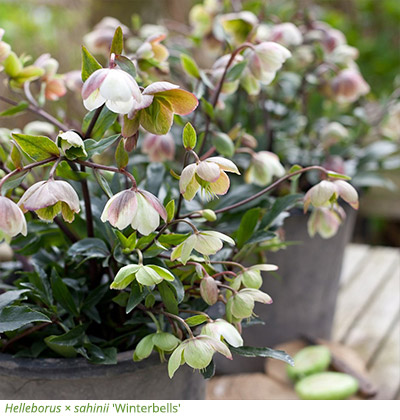 Some recently-bred hellebores have frosted foliage, as well as stunning flowers. These are known as The Marbled Group. ‘Anna’s Red’ and ‘Penny’s Pink’ have the advantage of offering good winter foliage, with silver and pink frosting, and the flowers tend to be larger and bolder as well. These sterile plants do not produce seeds. If space is tight, all hellebores do well in sturdy pots placed in a bright position for a couple of years. Helleborus x sahini ‘Winter Bells’ is superb and it will return year after year as long as the pot is given a shady position in summer and it’s fed and watered. ‘Winter Bells’ has greenish bells with pink-tinted backs, framed by dark foliage. Plant three in a large pot and you’ll have colour up until May, because hellebore flowers consist of rugged sepals, rather than soft, easily damaged petals. This helps them shrug off wintry weather. Some recently-bred hellebores have frosted foliage, as well as stunning flowers. These are known as The Marbled Group. ‘Anna’s Red’ and ‘Penny’s Pink’ have the advantage of offering good winter foliage, with silver and pink frosting, and the flowers tend to be larger and bolder as well. These sterile plants do not produce seeds. If space is tight, all hellebores do well in sturdy pots placed in a bright position for a couple of years. Helleborus x sahini ‘Winter Bells’ is superb and it will return year after year as long as the pot is given a shady position in summer and it’s fed and watered. ‘Winter Bells’ has greenish bells with pink-tinted backs, framed by dark foliage. Plant three in a large pot and you’ll have colour up until May, because hellebore flowers consist of rugged sepals, rather than soft, easily damaged petals. This helps them shrug off wintry weather.
If you have a warm south-facing wall, the winter-flowering clematis, C. cirrhosa var. balearica, will produce hundreds of bee-friendly greenish white bells lightly speckled in maroon. Known as the oak-leaf clematis, due to its dark glossy foliage, this bee pleaser really helps queen bumblebees during winter and early spring. ‘Freckles’ flowers earlier, from December onwards, and the whiter bells are freckled in a festive bright-red. The evergreen and more-rampant C. armandii, best on a westerly position, performs from March onwards and produces clusters of scented white flowers. These early clematis are in the no-prune group, although they can be given a neat tidy after flowering.
Other early bee pleasers include the rosemary, ‘Miss Jessop’s Upright’ and the lavender-blue flowers peak at the same time as Crocus chrysanthus ‘Cream Beauty’. Use both in warm positions, in order to fast-forward the flowers, or put them in a sturdy pot. Daphne bholua ‘Jacqueline Postill’, another candidate for a sheltered site, is fabulous in winter and early spring. This evergreen, fragrant Daphne, could be grown near a protective canopy of mature trees or be placed by a wall. Other shrubby bee pleasers include the shrubby winter honeysuckle, Lonicera × purpusii 'Winter Beauty', and this is a favourite of early-flying honey bees. Wintersweet, Chimonanthus praecox, is also popular and both of these early-flowering shrubs are highly fragrant.
 At ground level pulmonarias are equally good plants for early bees - and being members of the borage family, they have the ability to top up their nectar supplies really within minutes. The evergreen Pulmonarias, sometimes known as lungworts, also form good winter rosettes, so they offer shelter to hibernating insects whilst providing good foliage. The flowers come in shades of blue and pink, and occasionally white or lilac, and the flowers have a tendency to change from pink to blue once pollinated. They are sometimes called soldiers and sailors and Mary and Joseph due to these colours. The following, ‘Raspberry Splash’, ‘Opal’ and ‘Trevi Fountain’, have March flowers and silver-splashed foliage. ‘Silver Bouquet’ has silvered foliage that shimmers like a verdigris, weathered copper roof. ‘Blue Ensign’ is later, often performing in late-March or April, and this has very dark-blue flowers and plain foliage. It’s sterile, so there are no seedlings. At ground level pulmonarias are equally good plants for early bees - and being members of the borage family, they have the ability to top up their nectar supplies really within minutes. The evergreen Pulmonarias, sometimes known as lungworts, also form good winter rosettes, so they offer shelter to hibernating insects whilst providing good foliage. The flowers come in shades of blue and pink, and occasionally white or lilac, and the flowers have a tendency to change from pink to blue once pollinated. They are sometimes called soldiers and sailors and Mary and Joseph due to these colours. The following, ‘Raspberry Splash’, ‘Opal’ and ‘Trevi Fountain’, have March flowers and silver-splashed foliage. ‘Silver Bouquet’ has silvered foliage that shimmers like a verdigris, weathered copper roof. ‘Blue Ensign’ is later, often performing in late-March or April, and this has very dark-blue flowers and plain foliage. It’s sterile, so there are no seedlings.
Brunneras, fellow members of the borage family, provide heart-shaped foliage and dainty sprays of flower. ‘Jack Frost’ has frosted, silver foliage and blue flowers, but more are appearing with larger, more lavish leaves. ‘Looking Glass’ has more frost on its foliage and ‘Sea Heart’ has prominently veined foliage not unlike one of those sumptuous begonias grown under glass. Comfreys tend to self seed although ‘Bocking 14’ is sterile, so there are no unwanted seedlings. This is the one to make comfrey tea from, or you can cut the foliage and speed up your compost heap. The bees still visit.
May Gap Plants
May is the month when fresh foliage tends to dominate. Most of the spring bulbs and woodlanders have finished and most of the later perennials will not flower for several weeks. Aquilegias, forms of A. vulgaris, fill that gap and, if you trim away the foliage in late winter, you get a fresh selection of pretty leaves below your granny’s bonnet. Stable seed strains, which come true or almost true to type include ‘Ruby Port’, ‘White Barlow’ and ‘Norah Barlow’, both ‘stellata’ types with lots of small petals. Aquilegia vulgaris ‘Nivea’ is less predictable, but white aquilegias tend to have brighter green foliage. Geranium macrorrhizum ‘White-Ness’ shares this fresh combination of pure-white flower and grass-green foliage. All white flowers lighten semi-shade, and all flowers that self-seed liberally have to attract bees.
Thistles
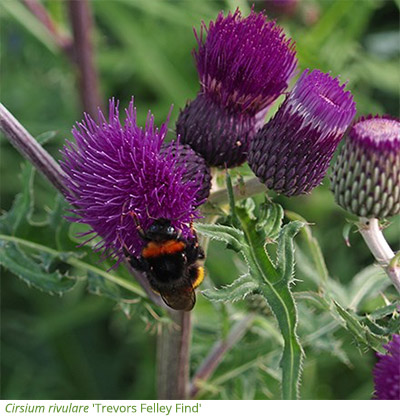 Also out in May is the handsome, tallish thistle, Cirsium rivulare ‘Atropurpureum’, a lover of damper soil. This raspberry-red thistle, a firm favourite at Chelsea for many years, will grow in shadier spots. If the weedy term thistle puts you off, this one will not run or set seed. It’s completely sterile and bees love these bristly looking flowers. There’s also a bluer-purple version called ‘Trevor’s Felley Find’ (syn ‘Trevor’s Blue’). Bees will also appreciate the thistly heads of cardoon flowers, Cynara cardunculus, although these tall, statuesque plants need space. Cornflowers, or centaureas, also please bees. Centaurea cyanus, an annual that once grew in cornfields, is a favourite of the red-tailed bumble bees (Bombus lapidarius). Deadheaded it and it will stay in flower for months. Sow seeds early, prick out and pot on for the best results. Also out in May is the handsome, tallish thistle, Cirsium rivulare ‘Atropurpureum’, a lover of damper soil. This raspberry-red thistle, a firm favourite at Chelsea for many years, will grow in shadier spots. If the weedy term thistle puts you off, this one will not run or set seed. It’s completely sterile and bees love these bristly looking flowers. There’s also a bluer-purple version called ‘Trevor’s Felley Find’ (syn ‘Trevor’s Blue’). Bees will also appreciate the thistly heads of cardoon flowers, Cynara cardunculus, although these tall, statuesque plants need space. Cornflowers, or centaureas, also please bees. Centaurea cyanus, an annual that once grew in cornfields, is a favourite of the red-tailed bumble bees (Bombus lapidarius). Deadheaded it and it will stay in flower for months. Sow seeds early, prick out and pot on for the best results.
Pincushions
Pincushion flowers are also popular with smaller bees and hoverflies and the pale-pink Astrantia ‘Buckland’ gives weeks of flower, even when the weather turns hot. Add in a scabious or two, and the blue ‘Kudo’ will flower for months. Scabiosa columbaria, a British Native, has a pincushion of blue flowers in the middle topped by stamens. It’s irresistible to all pollinators and much more garden-friendly than the field scabious, Knautia arvensis.
Plants with thimbles, made up from a collection of individual flowers, are loved by bumblebees. Eryngium × zabelii 'Jos Eijking' will provide you with a branching arrangement of steely blue stems topped by neat blue thimbles surrounded by jagged bracts. It’s easier to place because it’s a stronger blue.
Spires
These take up little ground space and yet they produce a stick of flowers that generally opens from the bottom up. Many are generous self seeders. One of the most obliging and long lived is Verbascum chaixii ‘Album’. Its thin tapers of small white flowers, with orange anthers set off by a blueberry blotch, look wonderful with roses. All verbascums are excellent, but they do have a short-lived tendency. Verbascum phoeniceum, a slender April-flowering verbascum that comes in different colours, can be raised from seed. ‘Violetta’ is a vivid purple and seems the strongest. The long wand of flowers keeps going over many weeks and it self-seeds if left, without being threatening.
 Our native biennial foxglove, Digitalis purpurea, produces a spike of cowl-shaped flowers in midsummer and these come in shades of pink, white and apricot some with heavy spotting. Bumblebees begin at the bottom and work their way up to the nectar source, pollinating as they go. Lots of seeds follow and they germinate in light positions - never quite where you want them. Our native biennial foxglove, Digitalis purpurea, produces a spike of cowl-shaped flowers in midsummer and these come in shades of pink, white and apricot some with heavy spotting. Bumblebees begin at the bottom and work their way up to the nectar source, pollinating as they go. Lots of seeds follow and they germinate in light positions - never quite where you want them.
If you can find a sunny spot for the long-flowering, sterile wallflower, Erysimum ‘Bowles’s Mauve’, this will flower from April until the first frosts. It will form a roundel, so it needs space and it will, like many a long-flowering plant, tend to flower itself out after a year or so. It’s often one of the last plants standing in autumn, which is important as many bees still fly in October.
Bees aren’t hard to please and plants bend over backwards to attract them. The musk mallow, Malva moschata, boosts its nectar at midday to attract bumblebees and butterflies. Also, anything aromatic has nectar-rich flowers whether it’s Origanum laevigatum ‘Herrenhausen’, or a lavender, a nepeta or a sage. Daisies will also please pollinators.
|









